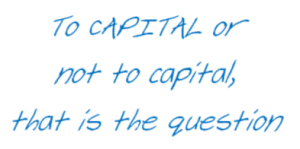I hope you find my writing and business tips and observations useful. My business and blog are dedicated to helping businesses communicate clearly and reach their potential.
Read, subscribe to my newsletter, enjoy!Tash
Mad libs to teach sentence contructions?
Have you ever done some “mad libs”? Is this something you remember fondly from school days – at least more fondly than the usual grammar lessons?
Personally, I hadn’t heard of mad libs until finding them mentioned in another blog, but apparently they have been widely used to teach children some grammatical terms in a fun way – maybe this is more common in the USA, or maybe I just missed out!
Anyway, a mad lib is where you choose some randoms words – nouns, adjectives, verbs and so on – and they are inserted into a piece of writing. The end result is usually nonsensical, but funny – and especially so for children I suspect!
I remember playing games where we each wrote a type of word, folded the piece of paper and passed it on to write another word on someone else’s piece of paper. The final result there was a funny sentence. Mad libs are similar to that game, but you don’t come up with the entire story with your words.
There is a website that actually creates the mad libs by asking you for the words and then producing the story for you. I tried it, inserting various Australian nouns, verbs and adjectives (in bold below), and got the following story as a result:
| A Typical History Test By: Roger Price & Leonard Stern |
Instructions: When the Australia rings, unfold your papers and answer the following Victorians.1. What general won the Battle of Adelaide.2. Which American river said, “Give me liberty or give me trees“?3. Who was the first president of the United animals of New Zealand?4. Why did Benjamin Franklin fly a/an bird during a thunderstorm?5. Who made the first beautiful flag?Answers to Test:1. Jackson2. Mel Gibson, when he was executed by Russell Crowe for riding.3. Ian Thorpe4. He was discovering koalas.5. Sigrid Thornton |
Finding a fun way to teach children the different types of words (nouns, adjectives, verbs, etc) is important for them to be able to construct good sentences and stories – but it isn’t always a fun topic to study!
Mad libs are certainly light-hearted but do require some knowledge of word types to work. The mad libs site includes definitions of the word types, too, to help children learn as the select words.
Do you think this is a useful tool in teaching children what a noun/verb/adjective/etc is? I’ll be letting my children have a go at these stories and see what they think of them. If I remember, I may even ask their teachers how they view this from an educational point of view.
Use your words wisely!
Capital letters
I suspect the increased use of SMS and chat shorthand is a major factor, but it seems that many people aren’t sure about when to use capital letters in their writing. So here is a quick summary of when to use a capital letter:
- for the word I – this word must always be written as a capital letter, to do otherwise looks out of place and attracts attention to the lack of attention to detail. As part of an SMS message, I might accept it, but I leave websites where they repeatedly use a lower case i
- to start a sentence – this helps make it clear it is a new sentence and this in turn makes it easier to understand the message and individual ideas
- for all proper nouns – that is, any word that is the name of something specific for example Tash, Melbourne, Australia, Australians and Word Constructions. It does not include generic names such as mothers, business owners, writers, city or students.* Note that the word I is actually a proper noun so my first point is covered here but it was worth a separate point!
- in acronyms – where just the first letter of each word is used to represent the name of something. For instance, the ATO represents the Australian Tax Office and ASAP represents as soon as possible. It doesn’t matter if the full title uses capitals or not, acronyms generally use capitals (sometimes a business may choose to brand themselves with a lower case acronym)
- the start of speech, even if it is not the start of a sentence. For example, she said “We must pay attention to the use of capital letters.”
- days of the week and names of months, as well as names of specific periods of history (e.g. the Second World War, the Depression)
- titles of books, articles, movies and so on can be written in title case (e.g. Full Moon Rising) or just with a starting capital letter (e.g. Confessions of a supermom)
Capitals letters are sometimes also used within names (e.g. AvSuper, MacGregor), in scientific terminology (e.g. E. Coli, Eucalyptus, cyclone Tracy) and where two words have been abbreviated into one (e.g. eBooks, eLearning.)
There are variations in some of these rules, especially if you travel to another country but using these guidelines will avoid any major errors! Or call upon someone to check your writing for you – errors that requires conscious effort for you to find often are quite obvious to others, especially to someone like me who spots such things without trying.
Edited to add: I came across a fun poster with the basic capital letter uses, which is great for kids and anyone struggling to remember these rules.
* The use of a generic noun as a proper noun requires a capital letter, too. So while mothers is written in lower case, a capital letter applies in the following sentence: Mary said “Hello Mother. How are you?” Likewise, you may write about a library (generic) or the Ashburton Library (specific).



Recent Comments